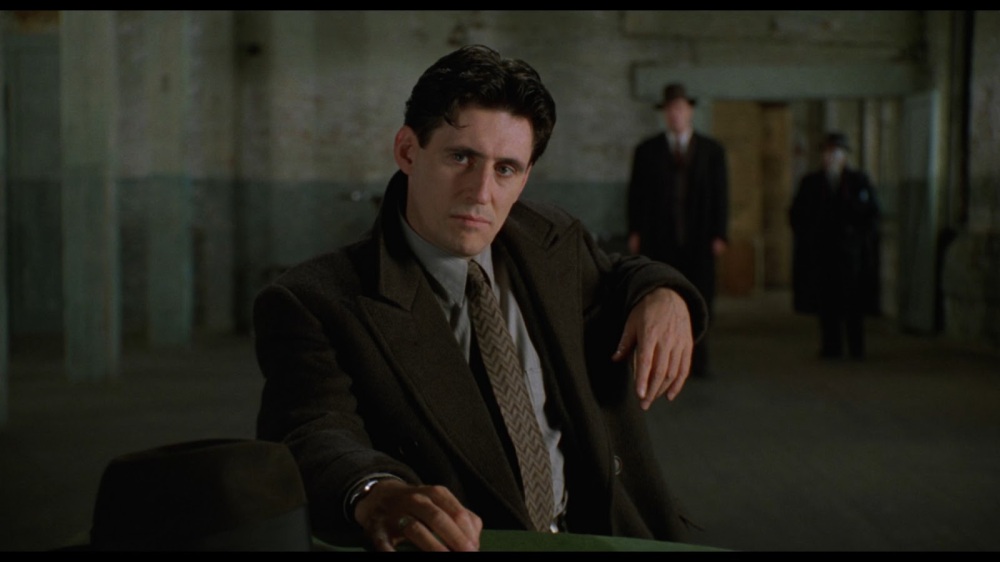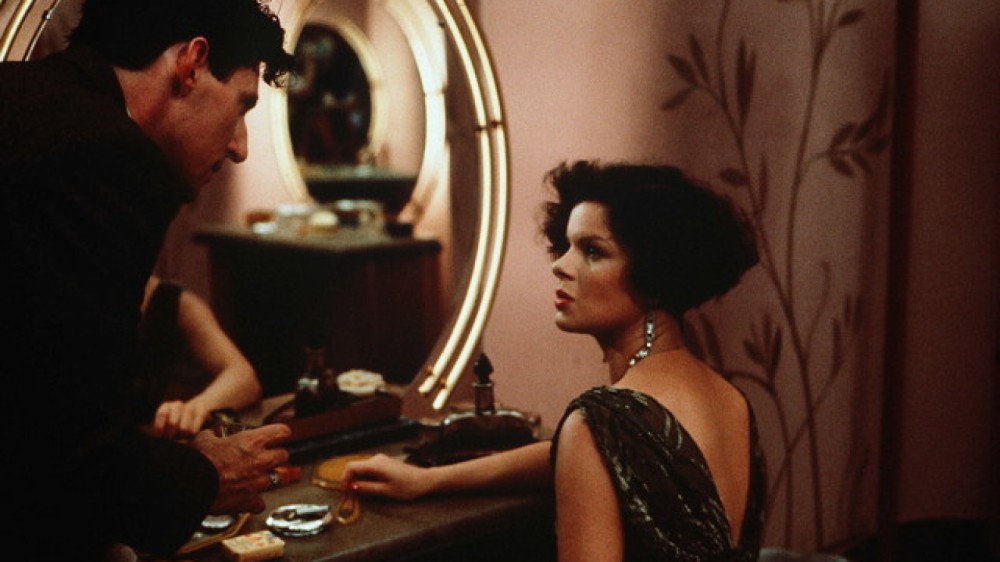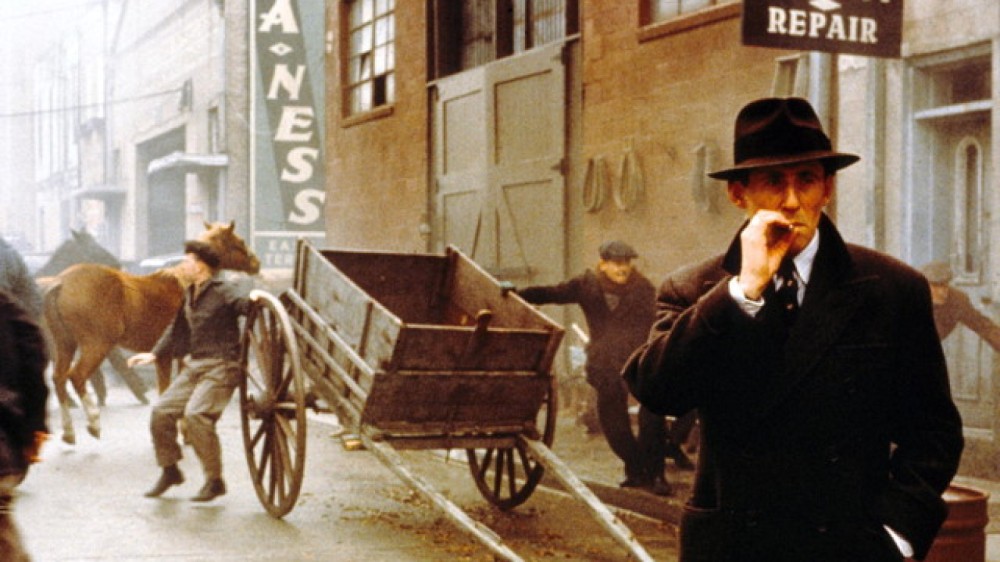Dir. Joel and Ethan Coen
Review by James Griffiths
A funny syndrome exists with a lot of good gangster films that have emerged post-1974: it’s the ‘best since The Godfather’ syndrome. There’s an equivalent for boxing films too, with pictures as diverse as The Fighter and Southpaw receiving their token ‘best since Raging Bull’ accolades from the media.
Goodfellas? Best since The Godfather.
The Departed? Best since The Godfather.
So it comes as no surprise that on the back of the Miller’s Crossing DVD case (Special Edition) we find Cosmopolitan magazine telling us that it’s the most “powerful” gangster film since Coppola’s masterpiece first electrified screens in the early 70’s. This characteristic hype is more deserving towards some films than others, of course, but does the Coen brothers’ Miller’s Crossing make the cut?
In a word, yes.

This film couldn’t be any more different to the Coen’s previous film, the brilliant, madcap comedy Raising Arizona. Miller’s Crossing has a distinct house style, a colour palette of dark greys, blues and bottle greens. It’s film noir of the highest order, all overcoats, fedoras, long shadows, and an audible ‘New Yoik’ aesthetic, captured particularly emphatically by the bombastic Jon Polito as gangland boss Johnny Caspar.
Like all Coen films, Miller’s Crossing is character driven. The eccentricity, verging on a certain madness, that runs throughout many Coen character arc, is very visible in this film amongst its cast of mobsters. The dialogue is as sharp as it is weighty, the duelling of two rival gangs slowly unfolding in a story that challenges the audience through its unashamed depth and complexity. There are comedic undertones to the whole thing, but in a shade very different to the screwball feel of Raising Arizona; there’s real unpleasantness in the characters, even morbidity, a sense of the grotesque. Take John Turturro’s Bernie hopelessly pleading for his life, held at gunpoint out in the bleak, north-eastern forestland, the grimness of the trees so evocative of the dark gangland landscape of the urban scene, the emptiness of it. Miller’s Crossing is as much a film about death as it is about gangsters; it concerns hope too, and the cruelty of the sudden loss of it.
In the middle of the drama sits Tom, played by Gabriel Byrne of Usual Suspects fame. Indeed, Tom shares real similarities to Suspects’ Dean Keaton, a gangster in his own right, an unpredictable criminal. Throughout the film Tom manages to fall out with pretty much everyone he comes across, as he plays these two crime organisations against each other, a man in the middle of a conflict. He’s completely without ‘ethics’, a subject with which the film opens, Johnny Caspar (one mob boss) spouting about the matter to the mighty don Leo (Albert Finney), his eventual adversary. He’s rarely rumbled, despite the film being chock full of ‘rumpus’, as the mobsters like to put it (“what’s the rumpus”), with Leo and Caspar going head to head in a battle for mob power. Tom finds himself, starting off as ‘loyal’ to Leo but chopping and changing as the action progresses, in an opportune position to steer things towards his own good, taking things as they come and acting with a foresight that he initially seems devoid of. He has a plan; but is it better than those he’s going up against?
Miller’s Crossing is as much a film about death as it is about gangsters; it concerns hope too, and the cruelty of the sudden loss of it.
There is only one prominent woman in the entire film: Verna, sister of Bernie, played by Marcia Gay Harden. Yet despite the overwhelming male presence onscreen, Verna dominates almost every scene she’s involved in. As the love interest of both Tom and Leo, she finds she has a hold over both of them; two violent men, subtly brought to their knees by a lady who knows a thing or two about surviving in a city of vice. In a way she mirrors Tom’s position: between two parties, pulling strings. She is to be feared as much as any of the mob men in the room, and why not? Prohibition era gangster culture was no doubt a man’s game, primarily, but that didn’t mean that it was only the men of the time that were dangerous.

Punctuating the drawn out verbal exchanges are eruptions of bloody violence. In true Coen style it is often sharp and shocking, a little over the top. Some of it is amusing – take the police force abruptly bursting into Leo’s bar and clobbering everyone in sight, prohibition still driving much police activity. Then take Leo, not a young man, leaping from his bedroom window in his nightgown and gunning down a pack of gun-toting fedoras. He is hailed as “an artist with a Tommy”, no less. Besides these, however, come cruel executions. Far from being mindless, these acts only go on to demonstrate that violence has consequences. Like any good film, the violence is not isolated from the narrative, nor employed as a means to simply shove the story onwards. Blood becomes a crucial factor in how the gangster underworld works, not just an event that happens, at times, when things boil over. Miller’s Crossing depicts a landscape that becomes rocked by acts of violence and aggression, fluid, the people involved changing and fluctuating along with it as more and more of them hit the floor. Here are two organisations, after all, battling it out for a grasp on power, and we all know that some people will go to any lengths to get their hands on such things, if only for an instant.
But we also learn that violence is intensely personal. The most harrowing scenes are perhaps those where Tom and Bernie come head to head, Bernie a grifter who double crosses those close to him, and Tom a lone wolf who doesn’t take prisoners. These encounters very much echo what Heath Ledger’s Joker says in The Dark Knight: “In their last moments, people show you who they really are.” Bernie’s transformation at the point of a gun is quite horrifying to behold, encapsulating the messy nature of conflict and the dehumanisation of killing. Indeed, Tom sums it all up with one of his final lines to Bernie, a line you’ll have to watch the film to hear. You’ll know what I’m talking about when you see it.

Miller’s Crossing is a gangster film with layers, a violent film with a moral punch, a complicated film. Powerful images are found within, perhaps the most striking being Bernie on his knees, staring down the barrel, a broken man. But then take the iconic image near the film’s beginning of a hat landing on a bed of leaves, on that autumnal forest path, before being blown away. Not only is it a beautiful, visually resonant piece of cinematography, but it’s also a devastating piece of foreshadowing, because what follows is a film in which many people are blown away. Few remain to tell any sort of tale whatsoever. Miller’s Crossing demonstrates that gangster films don’t just have to be about sharp lines and gunfire, but that they can actually capture, very powerfully, what life and death at the sharp end of conflictual living really looks like. It isn’t very pretty.
Alongside films like No Country for Old Men, Fargo, True Grit and The Big Lebowski, Miller’s Crossing is a title that can easily be overlooked in the Coen brother’s filmography, but it really shouldn’t be. I’m not sure if it’s the best gangster film since The Godfather, but it’s hard to say if there’s been a better gangster film since the Coen’s Miller’s Crossing. It’s a real rumpus.
James Griffiths is a final year JOMEC student. Follow him on Twitter: @JGriff95
Or follow his blog: https://therandomwordgenerator.wordpress.com/